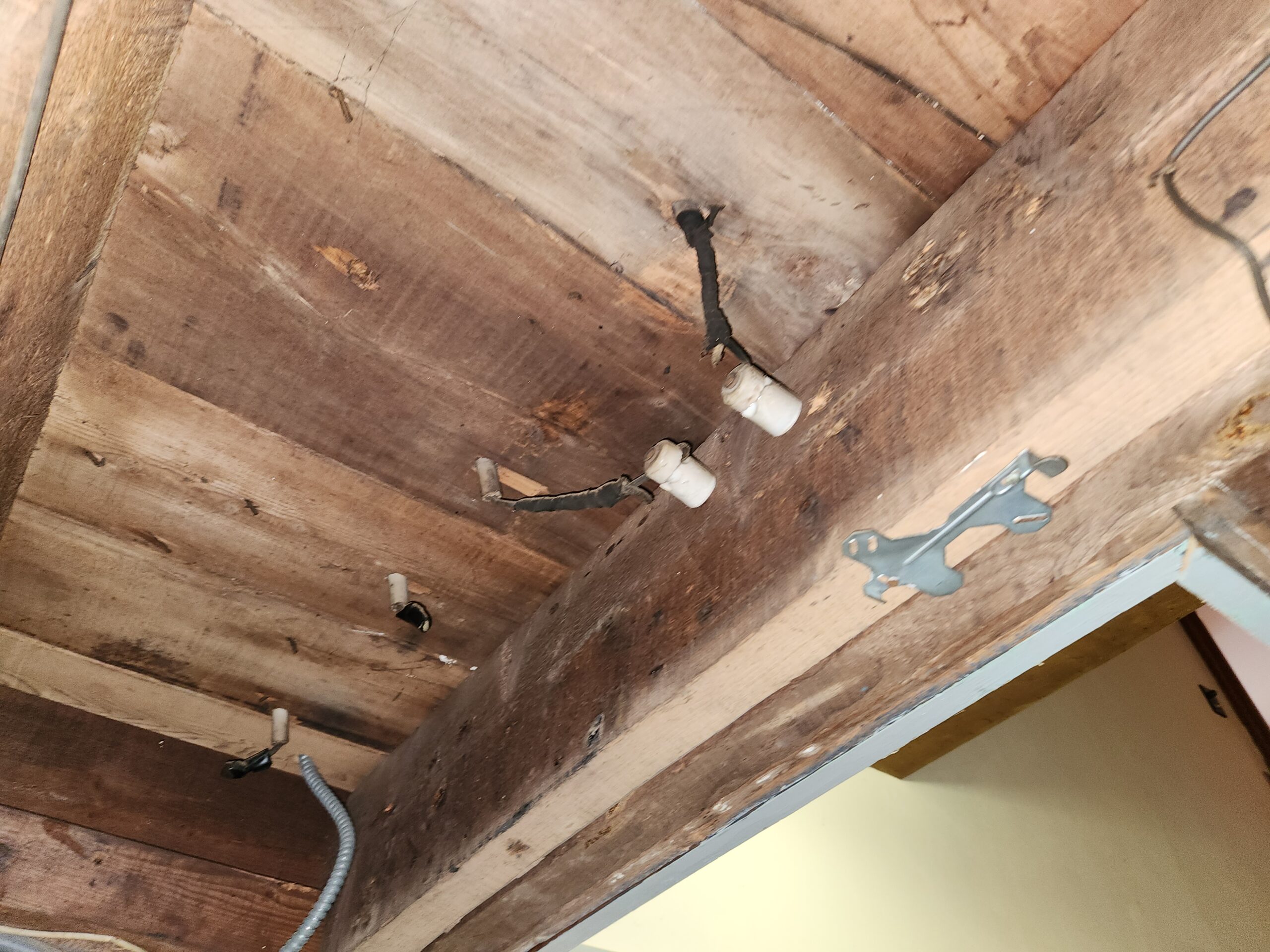Over the years, several types of wiring have been used in residential buildings, with advancements in technology and safety standards. Some of the most common types of wiring found in residential buildings include:
Knob and Tube Wiring:
Knob and tube wiring is an early electrical wiring system commonly used in buildings from the late 1800s to the 1940s. It consists of ceramic knobs and tubes to support and protect individual copper wires. The system keeps the hot (live) and neutral wires separated by using porcelain insulators. While it was considered a safe option in its time, knob and tube wiring is now outdated and poses safety risks. It lacks a grounding conductor, which can lead to electrical hazards and many jurisdictions now require its replacement with more modern systems.
BX Cable (Armored Cable):
BX cable, also known as armored cable, is a type of electrical cable that consists of insulated wires inside a flexible metal armor. The metal armor provides mechanical protection and also serves as the grounding conductor, offering better safety compared to knob and tube wiring. BX cable was commonly used in residential and commercial applications from the early to mid-20th century. While it is still found in some older buildings, it has largely been replaced by more modern wiring methods due to its limitations in capacity and flexibility.
NM (Non-Metallic) Cloth-Insulated Wiring:
NM cloth-insulated wiring, also known as “Romex,” is a type of electrical cable widely used in residential construction. It consists of two or more insulated wires (usually black and white) and a bare grounding wire, all encased in a cloth sheath. The cloth sheath provides minimal protection compared to modern NM plastic-insulated wiring. NM cloth-insulated wiring is an older standard and is generally found in homes built before the mid-20th century.
NM (Non-Metallic) Plastic-Insulated Wiring:
NM plastic-insulated wiring, also known as “Romex,” is an updated version of the NM cloth-insulated wiring. It has two or more insulated wires and a grounding wire encased in a plastic sheath. The plastic insulation provides better protection against damage and is the most common type of electrical wiring used in residential buildings today. NM plastic-insulated wiring is easier to work with, safer, and meets modern electrical codes.
Rigid Conduit:
Rigid conduit is a thick-walled metal pipe used to protect electrical wires and cables in commercial and industrial settings. It is typically made of steel or aluminum and is known for its durability and mechanical protection. Rigid conduit is suitable for both indoor and outdoor applications and provides excellent shielding against physical damage, moisture, and environmental factors. It is often used in places where wiring needs extra protection, such as in hazardous locations or areas subject to significant mechanical stress.
Flexible Conduit:
Flexible conduit is a more pliable alternative to rigid conduit. It is often made of metal or plastic and comes in various forms, such as flexible metallic conduit (FMC) or non-metallic conduit (NMC). Flexible conduit is mainly used in situations where wiring needs to be routed through tight or curved spaces, making it ideal for installations in confined areas. It offers some level of mechanical protection but is not as robust as rigid conduit.
Low Voltage Wiring:
Low-Voltage Wiring: For home automation and control systems, low-voltage wiring is employed. This type of wiring carries low electrical currents and is used for devices such as thermostats, doorbells, communications, security systems, and audiovisual setups.
It’s important to note that electrical codes and regulations can vary between regions and newer and safer technologies are continually being developed to improve electrical wiring systems. When dealing with electrical installations or replacements, it is essential to consult with a licensed electrician and comply with local building codes and safety standards.






